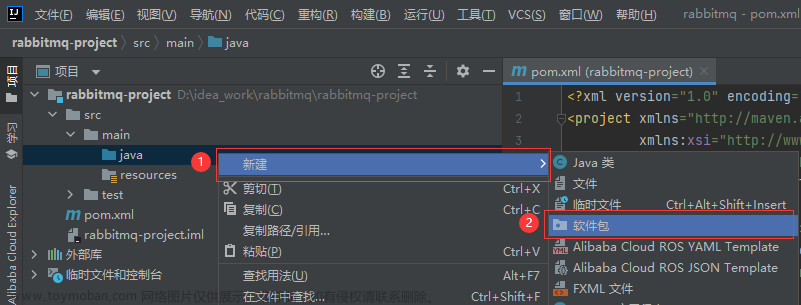1.交换机类型
- Fanout Exchange(扇形)
- Direct Exchange(直连)
- opic Exchange(主题)
- Headers Exchange(头部)
2.Fanout Exchange
2.1 简介
Fanout 扇形的,散开的; 扇形交换机
投递到所有绑定的队列,不需要路由键,不需要进行路由键的匹配,相当于广播、群发;
如下图所示
P代表provider提供者,X代表exchange交换机,第三部分代表队列
2.2 代码示例
2.2.1 扇形交换机与队列
定义交换机主要由3部分组成,
- 1.定义交换机
- 2.定义队列
- 3.绑定交换机
@Configuration
public class RabbitConfig {
//rabbitmq三部曲
//1.定义交换机
@Bean
public FanoutExchange fanoutExchange(){
return new FanoutExchange("exchange.fanout");
}
//2.定义队列
//此处定义两个队列
@Bean
public Queue queueA(){
return new Queue("queue.fanout.a");
}
@Bean
public Queue queueB(){
return new Queue("queue.fanout.b");
}
//3.绑定交换机
@Bean
public Binding bindingA(FanoutExchange fanoutExchange,Queue queueA){
//将队列A绑定到扇形交换机
return BindingBuilder.bind(queueA).to(fanoutExchange);
}
@Bean
public Binding bindingB(FanoutExchange fanoutExchange,Queue queueB){
//将队列A绑定到扇形交换机
return BindingBuilder.bind(queueB).to(fanoutExchange);
}
}
2.2.2 模拟provider发送消息
发送消息模拟
@Component
@Slf4j
public class MessageService {
@Resource
private RabbitTemplate rabbitTemplate;
public void senMsg(){
//定义消息
String msg="hello world";
//发消息
Message message= new Message(msg.getBytes());
rabbitTemplate.convertAndSend("exchange.fanout","",message);
log.info("消息发送完毕,发送时间为:{}", new Date());
}
}
2.2.3 接受扇形交换机信息
3.Direct Exchange
根据路由路由键(Routing Key)精确匹配(一模一样)进行路由消息队列;
与扇形交换机不同的是,直连交换机必须要绑定key
3.2代码示例
@Configuration
public class RabbitConfig {
//rabbitmq三部曲
//1.定义交换机
@Bean
public DirectExchange directExchange(){
return ExchangeBuilder.directExchange("exchange.direct").build();
}
//2.定义队列
//此处定义两个队列
@Bean
public Queue queueA(){
return new Queue("queue.direct.a");
}
@Bean
public Queue queueB(){
return new Queue("queue.direct.b");
}
//3.绑定交换机
@Bean
public Binding bindingA(DirectExchange directExchange,Queue queueA){
//将队列A绑定到扇形交换机
return BindingBuilder.bind(queueA).to(directExchange).with("error");
}
@Bean
public Binding bindingB1(DirectExchange directExchange,Queue queueB){
//将队列A绑定到扇形交换机
return BindingBuilder.bind(queueB).to(directExchange).with("error");
}
@Bean
public Binding bindingB2(DirectExchange directExchange,Queue queueB){
//将队列A绑定到扇形交换机
return BindingBuilder.bind(queueB).to(directExchange).with("info");
}
@Bean
public Binding bindingB3(DirectExchange directExchange,Queue queueB){
//将队列A绑定到扇形交换机
return BindingBuilder.bind(queueB).to(directExchange).with("warning");
}
}
4. Topic Exchange
通配符匹配,相当于模糊匹配;
#匹配多个单词,用来表示任意数量(零个或多个)单词
*匹配一个单词(必须有一个,而且只有一个),用.隔开的为一个单词
5.Headers Exchange
基于消息内容中的headers属性进行匹配;文章来源:https://www.toymoban.com/news/detail-721536.html
用的比较少文章来源地址https://www.toymoban.com/news/detail-721536.html
到了这里,关于RabbitMQ的交换机(原理及代码实现)的文章就介绍完了。如果您还想了解更多内容,请在右上角搜索TOY模板网以前的文章或继续浏览下面的相关文章,希望大家以后多多支持TOY模板网!












